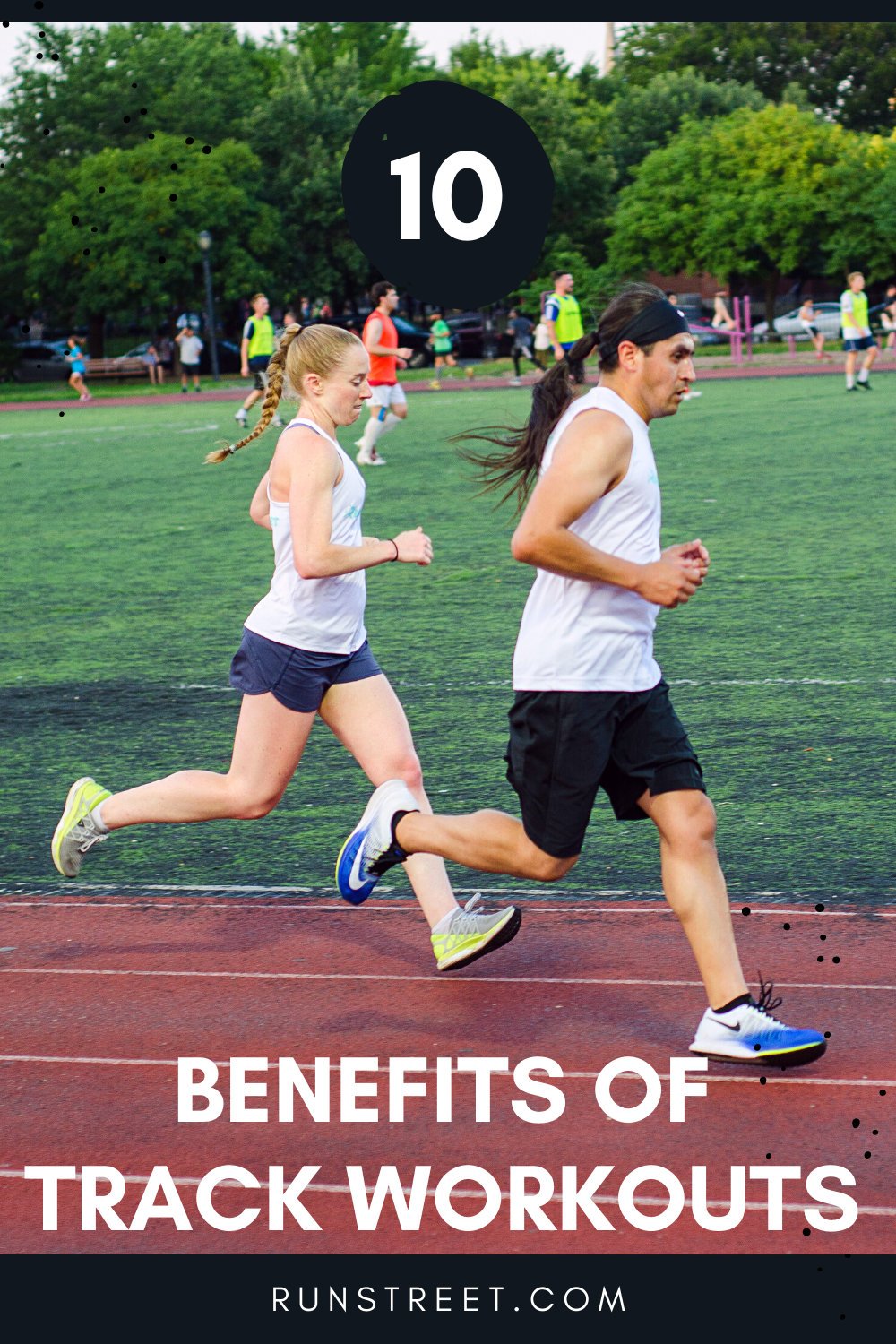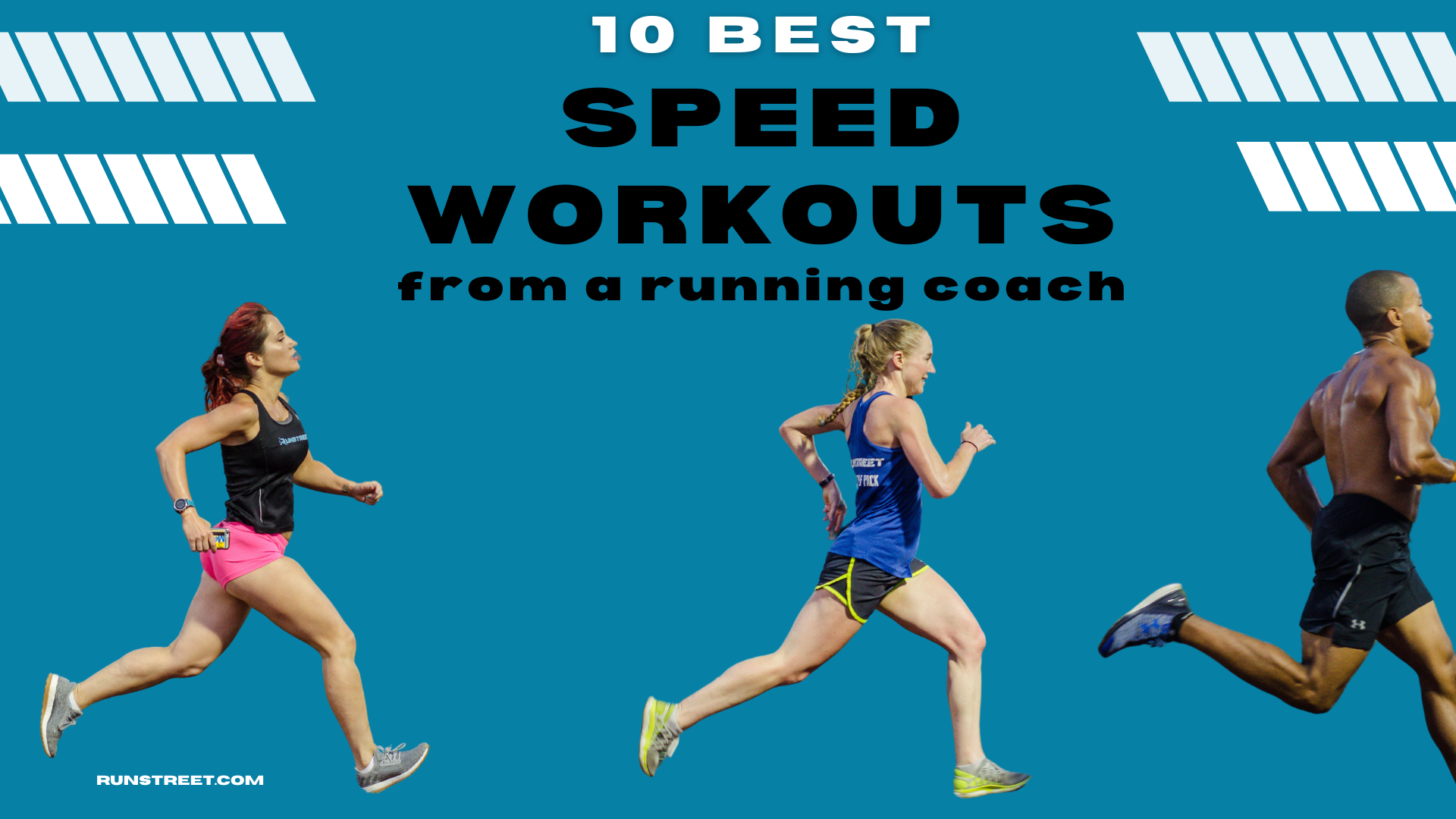10 Benefits of Track Workouts
Photos by Marques Jackson Photography.
By Marnie Kunz, NASM-certified trainer, USATF- RRCA-certified run coach
Speed workouts — a staple for pro runners and college athletes — offer much more than a boost to your race pace. In fact, you can reap the amazing benefits of track workouts without being particularly fast or a “serious runner.” Whether you want to boost your metabolism and burn fat, build muscles or help prevent injuries, speed workouts will help. As a running coach, I use speed workouts to help my clients run more efficiently, improve their fitness level, and meet their race time goals. Speed workouts are also an excellent way to mix up your running routine and prevent getting stuck in a fitness plateau.
And speed workouts can be adapted for all fitness levels - whether you’re a beginning runner or a longtime marathoner.
Related: Runstreet Training Plans
What Are Track Workouts?
First, you may be wondering what are track workouts exactly. For runners, track workouts can be any running workouts on a track. In general, most people refer to track workouts when they do speed training on a track. For this article, track workouts include all speed workouts on a track (not slow running of laps on a track). A speed workout may include intervals, fartleks, and tempo runs. Most track workouts are interval workouts, which are periods of fast running interspersed with segments of recovery. The track is an ideal place for speed workouts because it’s a measured, flat, uninterrupted surface for running. You can easily know your time and distance when you run on a track. A standard outdoor track is 400 meters or one-fourth of a mile.
The Benefits of Track Workouts Will Have You Running to the Nearest Track
When I coach runners, speed workouts are usually the main focus of our training sessions. Whether you’re a runner who wants to lose weight, training for a marathon, or running your first 5K, track workouts can help you get stronger and faster, and improve your overall fitness and conditioning.
Here are 10 benefits of track workouts that will have you running to the nearest track for intervals:
1. Burn calories.
Running fast burns a lot more calories than slow, leisurely-paced running. You can burn up to 200 calories in just 2.5 minutes of intense sprinting, as opposed to burning only about 100 calories per relaxed/10-minute mile of running. Your exact calories burned also depend on your weight and pace, but in general, the faster you run, the more calories you burn. This makes speed workouts a great way to lose weight.
2. Boost metabolism.
Even after you stop running, speed workouts boost your metabolism, so your body will continue to burn more calories while at rest and doing daily activities. After a hard speed workout, your body burns fat instead of carbs. This extra calorie burning after speed workouts is known as excess post-exercise oxygen consumption (EPOC).
3. Build muscle.
Can’t make it to the gym? Well, you can still build muscle without weights. Track workouts help build your fast-twitch muscle fibers, increasing your muscle mass, especially in the glutes, quads, hamstrings, and calves. As we age, type II muscle fibers decline, according to the American Council on Exercise, but high-intensity running is a great way to build and maintain type II muscle fibers and muscle mass at every age.
4. Reduced risk of running injury.
Track workouts offer a cushioned, flat running surface that lessens running impact and injuries. The track is therefore a better training surface than the road or trails for maintaining a flat, even surface with cushioning. Also, training your body to run speed workouts improves your running form and efficiency, reducing your chances of getting injured.
5. Better balance.
There are many benefits of track workouts for all levels of runners.
Speed workouts improve your leg strength and balance, helping you run more smoothly and efficiently. This is important to help your body stabilize as you run and prevent falling and injuries.
6. Improved running form.
Training your body with speed work improves your heart rate and oxygen efficiency while you run and also improves your running stride.
7. Stronger bones.
Sprinting helps boost your bone density, even more than slower-paced running. Older sprinters have better bone density and neuromuscular functioning than older distance runners, according to a study published in Osteoporosis International.
8. Faster race pace.
The obvious benefit of speed workouts is becoming a faster runner. Running a minimum of one speed workout a week will make a big impact on improving your race performance. Speed workouts train your body to perform at faster paces even while fatigued, making you a stronger runner when you race.
9. Reduced joint impact.
Tracks offer a flat, cushioned running surface, which gives your joints a break from pounding the pavement. The flat surface also helps your legs stabilize more easily as you run. Running on the track takes some pressure off your legs and helps reduce your chance of getting injuries such as shin splints, which are worsened by hilly, rough terrain.
10. Runner’s high!
We may have all experienced the high of a long run, but what about the endorphin rush from flying through the air at your body’s top speeds, pushing yourself to new levels? The runner’s high and satisfaction from completing a tough track workout are hard to duplicate.
With all of the benefits of track workouts, there’s no better time to get out there and do some track speed sessions. Need help getting started? Check out Interval Training for Beginners and download my 10 Best Speed Workouts for Runners.
Do you incorporate track workouts in your running program? Comment below and tag @Runstreet on Instagram to share your training progress and get cheered on. For a personalized training plan to help you become your best running self, visit the Runstreet Training Center.
Related Posts: 5 Speed Workouts for 5K Success, 3 Track Workouts to Improve Your Race Times, Improve Your Running with Progressive Overload
Marnie Kunz is a NASM-certified trainer and USATF- and RRCA-certified running coach, a dog lover, an Akita mom, and the founder of Runstreet. She specializes in helping runners get faster and stronger and helping beginners elevate their fitness levels. She is based in Brooklyn, New York.




